Cherry planting technique from A to Z
Among the questions asked by summer residents who decide to start growing fruit and berry crops, one of the first is how to plant a cherry. The further development and yield of the tree depends on the correctness of the procedure. A competent approach to planting and adherence to agricultural technology will allow him to delight the owners with an abundance of juicy and tasty berries up to 15 years old.
Suitable place and soil preparation
It is undesirable to transplant cherries: it reacts poorly to the procedure. Therefore, the choice of a place for it must be approached responsibly, trying to immediately take into account how much it will grow over time, whether other trees and walls of buildings will interfere with it. The culture prefers loose, well-drained soil. Cherries will be most comfortable in light or medium loamy, sandy or sandy loamy soil with a neutral reaction. They do not tolerate acidic soil.
Suitable for them are areas open to the sun, but sheltered from the wind, located in the west, south-west or south side of the garden. In such conditions, trees grow more actively, and berries ripen on their branches faster. When deciding on a place for planting cherries, it is important to take into account its botanical features. Trees bloom early, when the threat of frost has not yet passed. Cherry protection from winds is especially necessary in the winter-spring period. It affects the longevity, health and productivity of plants. Combined with wind, frost can damage trees more. When the cherries bloom, currents of cold air will interfere with pollination, drying out the pistils and making it difficult for the bees to work.
In lowlands, where it is damp and windy, and in areas with swampy soil, crop cultivation will not be successful. It is advisable to plant cherries on gentle slopes, near fences or buildings. In winter, they will trap snow, protecting trees from freezing. Cherries will not benefit from the proximity of groundwater. Their minimum depth at the landing site should be 1.5 m.
Land for cherries is prepared in advance. If the procedure is carried out in the spring, the soil is treated in the fall, digging up and enriching it with fertilizers. Organic and mineral compositions are suitable for culture.
For planting, the following components must be brought in (per 1 m²):
- up to 15 kg of manure (compost);
- 100 g of phosphorus fertilizers (superphosphate, phosphate rock);
- 100 g of potassium preparations (potassium sulfate, potassium chloride, potassium salt).
Nitrogen-containing fertilizers cannot be used at this stage, otherwise the roots of the seedlings will burn in the spring. If the soil on the site is acidic, it is lime. The procedure is carried out before the introduction of manure.
Sapling selection
For cherry planting to be successful, you need to choose the right crop variety. They are guided here primarily by the peculiarities of the local climate. For regions located in Central Russia, varieties of cherries with good frost resistance are suitable: Shokoladnitsa, Nizhnekamskaya. In the south, more thermophilic varieties are successfully grown: Bagryanaya, Zhukovskaya. For the Moscow region, it is better to choose trees that are not affected by fungal diseases: Toy, Shubinka. In the Urals, cherries Ashinskaya, Bolotovskaya, Mayak have proven themselves well. In the harsh weather conditions of Siberia, the varieties Altai Swallow, Metelitsa, Shadrinskaya will be able to survive and bring a generous harvest.
When choosing a seedling, they carefully examine its roots. They must be strong and well developed, free from damage, signs of disease or insect infestation. The wood must also be examined. A quality seedling will have it ripe. Young trees, at the age of 1-2 years, which were grafted with a cuttings, have a good survival rate.Usually their height is 80-110 cm. From 3-4-year-old seedlings it will take longer to wait for the harvest. All leaves are removed from the future tree to avoid dehydration. After moistening the roots of the seedling, they are wrapped in a damp cloth, and a layer of film is added on top. This way they will not dry out.
You can buy cherries in the fall. If it is planned to plant it in the spring, the tree is buried. In the area where the snow lingers the longest, a furrow of medium depth (35-50 cm) is prepared. Its southern wall is made inclined (30-40 °). A seedling is placed in it, with its roots pointing down. Its crown should face south. This will protect the tree trunk from burns. Then the cherries are sprinkled with soil to the side shoots.
Having tamped well and abundantly watering the ground, the crown of the tree is covered with spruce branches. It will protect the branches from frost and rodents. From above, the shelter is covered with a thick (0.5 m) layer of snow. It is advisable to do this before frost. The trees are removed from the furrow only before being placed on a permanent site.
Landing time and scheme
Practicing spring and autumn planting of cherries. The optimal timing for it depends on the climate. In southern regions, where winters are mild and warm, trees are planted in open ground in mid-autumn, when about a month remains before the onset of frost. In the temperate climate of the middle zone, the placement of cherries on the site begins earlier - in September. In Siberia and the Urals, summer residents use only spring planting. By winter, the trees will root well and will be able to survive the difficult period with minimal losses. Zoned crop varieties can withstand temperatures down to -40 ° C. Spring planting is carried out in April while the buds on the plant are still dormant.
The layout of the trees is determined by the selected crop type. If the cherry is columnar, 1 m of free space is left between adjacent plants. A bushy variety of culture is planted at intervals of 2 m. The row spacings are made wide - at least 2.5 m. It is convenient to place plants in a checkerboard pattern.
The distance between representatives of tree varieties is increased to 3-3.5 m. If you place them closer, the cherry will begin to stretch, such a planting will make it difficult to care for the cherry. It will be difficult to pick berries from a tall tree. Fruiting will also worsen: in the shade and in the middle of dense foliage, flowers will not be able to fully pollinate.
Advice
It is necessary to take into account the characteristics of a particular variety. Some of them prefer a tighter fit. Expanding, their crowns will be slightly intertwined.
Cherry, which combines the advantages of two crops at once, is planted even further - at a distance of 4-5 m. It cannot pollinate independently. To enjoy its sweet and large berries to your fullest, you need to place a cherry nearby and cherries... 2-4 trees will be enough.
Steppe cherry also needs pollinators. Trees are selected for planting so that the varieties match each other. Self-fertile varieties of cherries (Rossoshanskaya black, Shokoladnitsa) are also popular with summer residents. The berries are tied on them, even if only one tree grows on the site. But if there are neighbors: Lyubskaya, Turgenevskaya, Vladimirskaya cherry - the yield will be higher.
How to plant cherries
Early planting is recommended. They begin to it when the snow melts, and the soil dries out a little and warms up, choosing a warm, dry and windless day for the procedure. Before placing in the ground, the roots of the seedling must be carefully examined. The damaged areas are carefully trimmed to healthy tissue. Dried roots are reanimated by immersing them in water for 3-4 hours. You can use a solution of a drug that stimulates root growth.
The planting hole is prepared in advance, at least 2 weeks in advance, and preferably in the fall. It should be of medium depth (50-60 cm) and wide (80 cm). Shallow planting will cause the roots of the tree to overheat in summer and freeze in winter. But if you deepen the cherry too much, the development of its root system will be difficult. A support is installed in the center of the hole - a wooden stake 1 m high.
Digging a hole, the top layer of soil is set aside. It will need to be mixed with fertilizers:
- humus;
- wood ash;
- phosphorus-potassium preparations;
- complex formulations.
The resulting soil mixture is poured into the pit so that a mound forms around the support. Having dipped the lower part of the seedling into a mash made of soil or clay with manure, it is placed on top of the northern side of the stake and, carefully spreading the roots, covered with earth. It is necessary to ensure that the tree trunk is strictly perpendicular to the ground surface. If everything is done correctly, its root collar should remain above the soil - 4-5 cm above it.
The soil around the seedling is well compacted and forms a hole. Then the tree is watered abundantly, bringing about 3 buckets of water under it. It should be warm, room temperature. After watering, the soil will settle, and the root collar of the plant will be at the same level with it. The trunk is tied to a support so that it does not break from the wind. The surface of the hole is mulched. You can use for this:
- dry ground;
- humus;
- peat;
- sawdust.
The thickness of the mulch should be 3-5 cm. Its layer will not allow the soil crust to form and will keep the soil moist longer.
Alternative way
Cherry, bush, tree, columnar cherry - whatever type of culture is chosen, they are planted in the manner described above. The only exceptions are heavy dense loams and areas where the groundwater level is high. In order for the cherry to easily and quickly take root on them, you need to properly prepare the place for the tree.
The secret is simple: they place it not in a hole, but on a hill. First, a small hole is made in the ground about 25 cm deep. After adding fertilizers to the fertile soil, pour the nutrient substrate from above. It should fill the recess and form a mound 25-30 cm high.
The tree will grow in this pile of land. Otherwise, its fit is no different from the traditional method. The roots are straightened, sprinkled with earth, compacted, watered abundantly and mulched. Upon closer examination, it becomes clear that the depth of the planting pit in this case is still 50 cm, just 25 of them are above the soil surface, and 25 - below it.
Features of agricultural technology
Growing cherries on the site will not burden the gardener. Outdoor tree care includes standard activities:
- watering;
- top dressing;
- loosening the soil;
- weeding;
- pruning.
In the first days after placement on a permanent site, the seedlings are watered frequently and abundantly. Already matured cherries and mature trees need moisture on hot days, when there has been no rain for a long time. The crop is drought-resistant, but regular watering will have a positive effect on the quantity and quality of the crop. The soil in the trunk circle is regularly loosened so that the plant roots receive enough oxygen.
In order for the harvest to be plentiful, the plantings need to be periodically fed. Do this twice a season using a diluted mullein. Wood ash can be mixed into the nutrient solution. Suitable for fertilizing and mineral formulations. In the fall, dry fertilizers are scattered around the trunk circle, embedding them in the soil by deep digging.
Cherry vegetation starts early. Therefore, in the spring in the open field, trees often suffer from frost. To prevent this from happening, you need to protect the soil at the base of the plant from premature heating by the sun's rays. Snow is raked to the trunk, and a layer of straw or sawdust is poured on top of it. If this is not done, the buds may open too early before warmth is established.
It is easier to care for cherries, the crown of which is formed. Cropping will help here. The central and lateral branches are slightly shortened even in young trees. Cherries without pruning will not bring a good harvest. The tree is exposed to it already at the seedling stage. Placing it in the ground, remove the upper part of the trunk and skeletal shoots. After the procedure, the height of the seedling should be 60 cm.The next year, the side branches are shortened by ⅓ of the length. Until the cherry begins to bear fruit, its shoots will actively grow. When the first berries appear on them, their development will slow down.
Anti-aging pruning is important for cherries. They spend it in the spring. The crown of cherries is thinned out, removing all shoots older than 4 years old. The procedure is repeated every 5-6 years. Thickening of the crown leads to a decrease in the yield of the tree and crushing of the berries.
With proper care, in 2-3 years, the former seedling will not be recognized. It grows well, and the first cherries will ripen on its branches. A young tree will begin to bear fruit fully at the 4th-5th year of life. And there is a wide variety of uses for the crop.
Cherries are good in fresh, dried, dried, soaked, pickled form, as part of compotes, preserves, jams, filling for pies, pancakes and dumplings. They make juice, wine, liqueurs, marmalade, sherbet, sauces. They add cherries to tea, smoothies, ice cream and even salads. You can endlessly experiment with juicy sweet and sour berries, each time discovering new facets of taste. And how beautiful the cherry orchard glorified by poets and writers is in the spring, when the branches of the trees are strewn with delicate flowers, and in the summer, when they bend under the weight of scarlet fruits!
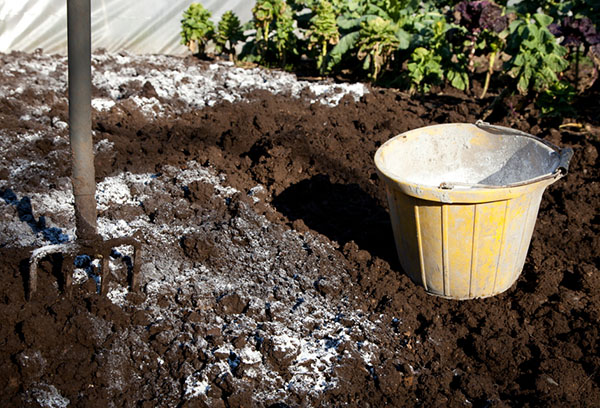
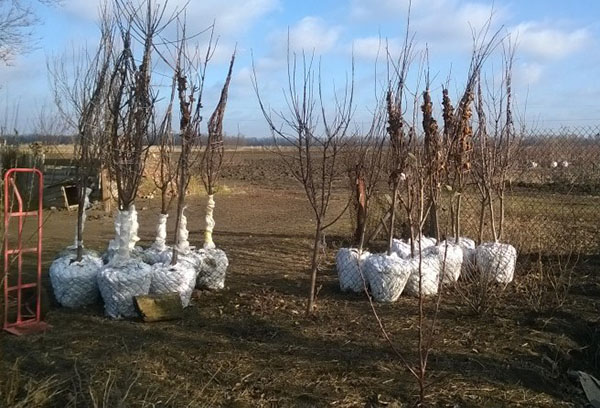
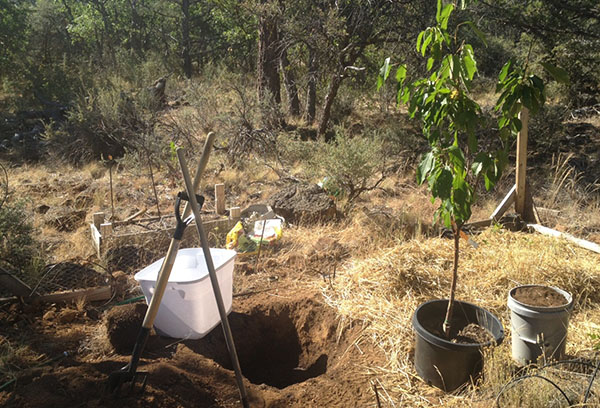

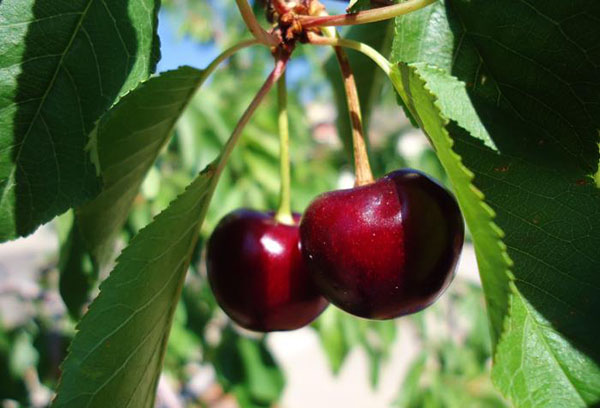
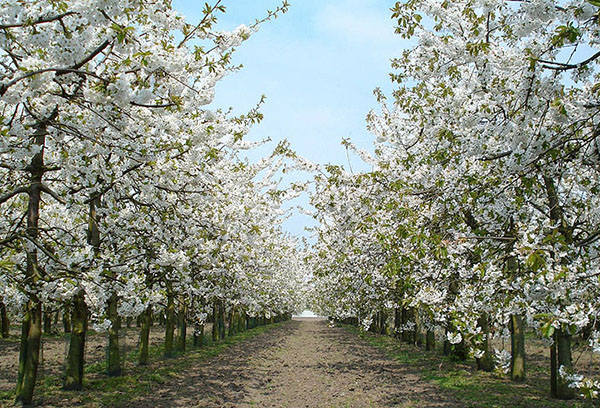


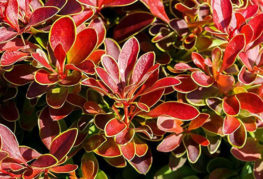
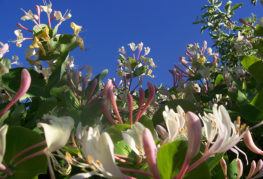
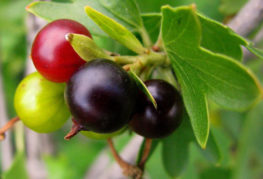
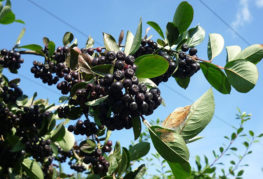
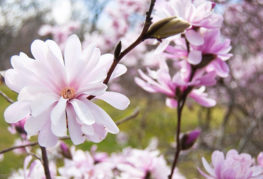
and will be published shortly.